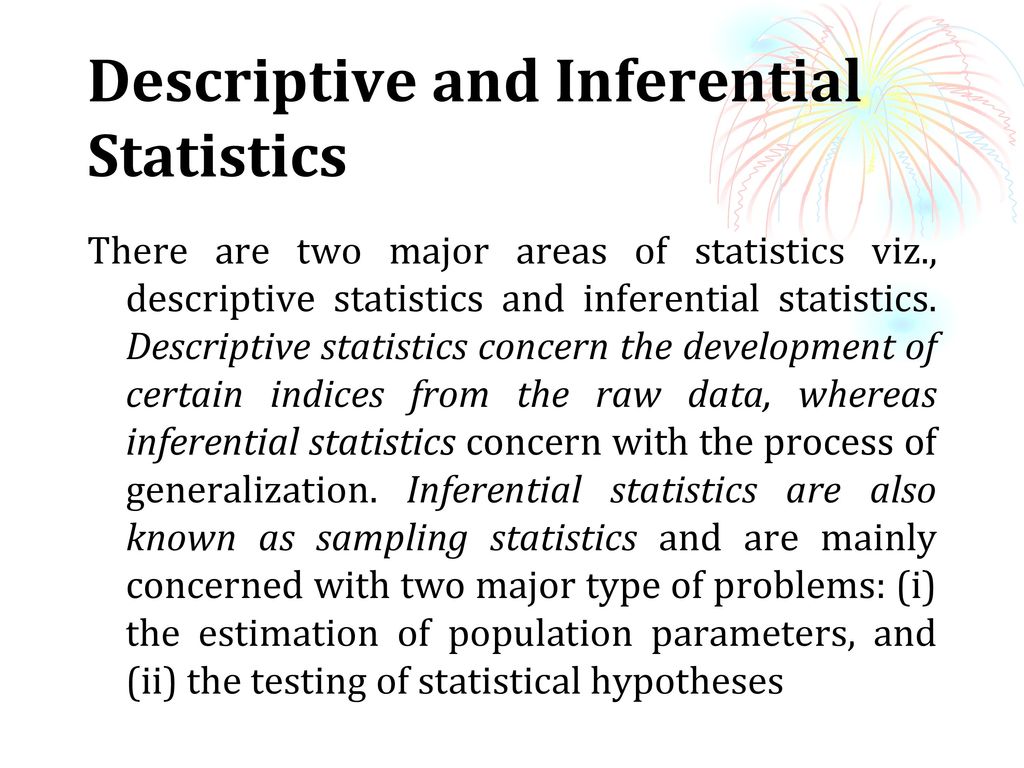
Descriptive And Inferential Statistics Definition. When we use descriptive statistics it is useful to summarize our group of data using a combination of tabulated description ie tables graphical description ie graphs and charts and statistical commentary ie a discussion of the results. This is useful for helping us gain a quick and easy understanding of a data set without pouring over all of the individual data values. Mean median mode variance and standard deviation. The use of descriptive statistics is when sampling is not required.

Most of the researchers take the help of inferential statistics when the raw population data is in large quantities and cannot be compiled or collected. Inferential Statistics is a type of statistics. Inferential statistics is one of the two statistical methods employed to analyze data along with descriptive statistics. Inferential statistics use samples to draw inferences about larger populations. The goal of this tool is to provide measurements that can describe the overall population of a research project by studying a smaller sample of it. Descriptive statistics is a way to organise represent and describe a collection of data using tables graphs and summary measures.
Inferential statistics use samples to draw inferences about larger populations.
The use of descriptive statistics researchers has complete raw population data. These observations had been described by the descriptive statistics. Descriptive statistics and inferential statistics has totally different purpose. Meanwhile inferential statistics is concerned to make a conclusion create a prediction or testing a hypothesis about a population from sample. Inferential Statistics is a type of statistics. Descriptive statistics use summary statistics graphs and tables to describe a data set.